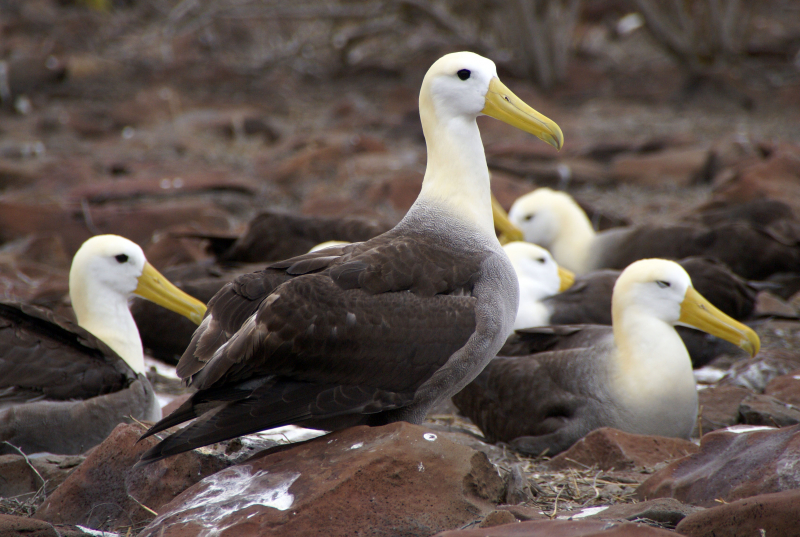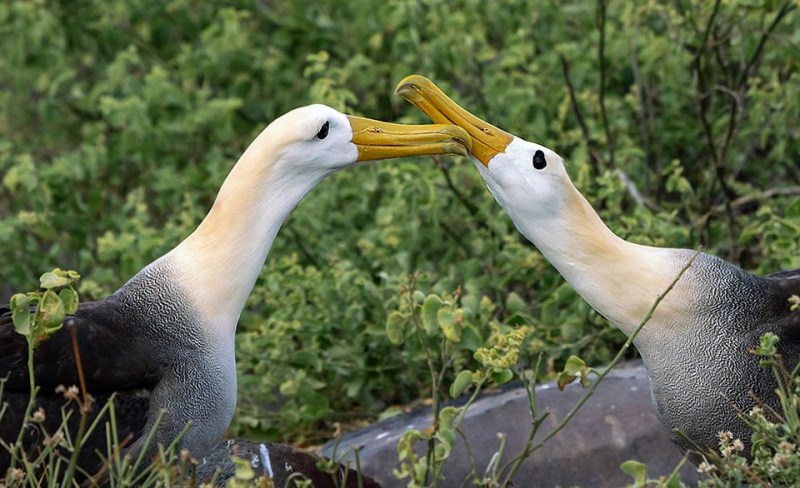Waved Albatross
The only Diomedeidae bird found in the tropics is the waved albatross (Phoebastria irrorata), popularly known as the Galapagos albatross. The waved albatross derives its name from the wave-like pattern of the feathers on adult birds. They travel a straight route of around 1,000 kilometers (620 miles) to a single spot off the coast of Peru to forage. These birds mostly live along the shores of Ecuador and Peru during the non-breeding season.
These albatrosses are of medium size, with a length of 80 to 90 cm (31 to 35 in) and a wingspan of 220 to 250 cm (7.2 to 8.2 ft). They weigh between 2.7 and 4.0 kg (6.0 and 8.8 lb), with men being noticeably heavier than women on average. [8] Their striking neck and head, which contrasted with their primarily brownish bodies, give them away. The very long, vivid yellow bill, which appears excessively huge in relation to the comparatively small head and long, thin neck, is even more noticeable. Additionally, they have chestnut-brown top and underparts, with fine barring on the rump and coarser banding on the breast, save for the breast. Along with a whitish breast and underwings, they have brown upper wings, a brown back, and a brown tail. They have brown axillaries. Chicks have brown fluffy feathers. The lifespan of this species may reach 40 to 45 years.













